Danny L Harle gave us a tour of Club Harlecore
Let's do a lap around the place where the rave never ends
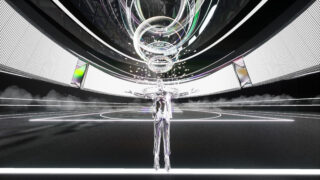
Let's do a lap around the place where the rave never ends
At Club Harlecore, the rave never ends. That’s the crux of Danny L Harle’s utopian alternate universe that can be accessed through your browser. In this virtual space, you chase euphoria in four wildly different and equally bonkers rooms, which are each home to a DJ character designed to appeal to a different kind of listening experience. All four of these characters – from the early ’00s makina-inspired MC Boing, to the relentless hardcore kick thump of DJ Mayhem – come together to make a love letter to rave music.
This is a very particular kind of love, born out of years of listening to rave music alone through headphones, disconnected from the culture embedded in the tunes. Surrounded by low-polygon ravers, you experience the private world Harle felt a visceral connection to even at a distance.
“For me, and a certain type of person, this idea of connecting isolated people is a really warming idea,” Danny says. “It’s a very modern thing, this connecting of people using technology.
“These kinds of people used to be completely isolated, and technology has evolved to a certain extent that these people are less isolated, or maybe even connected and isolated at the same time. It’s a kind of paradoxical existence.”
Harle soon found a group of likeminded friends who shared his enthusiasm for this often misunderstood and castaway form of dance music. The early club nights they put on cleared a few dancefloors, but they were also instrumental to forming the PC Music sound that’s influenced so many artists.
He’s gone on to work with acts like Charli XCX, Caroline Polachek and Hudson Mohawke, but through it all, it’s that feeling of melancholic and isolated euphoria that he’s chasing. For him, it could only be fully expressed in this virtual form.
Club Harlecore might seem right at home in the age of online raves and virtual club nights, but where the raves of the pandemic still aim to capture a sense of group catharsis, Harlecore shoots for a kind of introspective euphoria. It’s a stunningly complex project for a debut album, but for all its multi-platform/multi-sensory uniqueness, Club Harlecore is centred on a beautifully simply principle – to sound the way that Danny feels.
“It took me a while to embrace it, because I went through a wild musical journey in the other direction”, Danny says. “That thing you see of people banging on about complex musical theory and difficult to play jazz rhythms – I was very much into that when I was young. It was music as a mental athletic flex. It took me until the end of my musical studies to just get real with music, and work out exactly what I liked.
“I realised that I like extremes. For me, this kind of rave music was the most distilled form of what I wanted to hear. My father [saxophonist John Harle] said to me early on that my own personality was being much more eloquently communicated through the electronic stuff because it was clearly for my own enjoyment. There wasn’t any kind of filter of what serious music should sound like.”
Danny L Harle graciously guided me through Club Harlecore, which he was keen to stress isn’t just his place. Instead, it’s somewhere he visited that he wants to share with other people.
“There is a known pilgrimage through the club. The club exists in the field amongst the mountains. In a certain state of mind, you can find it. It’s not a physical place that you can discover.”
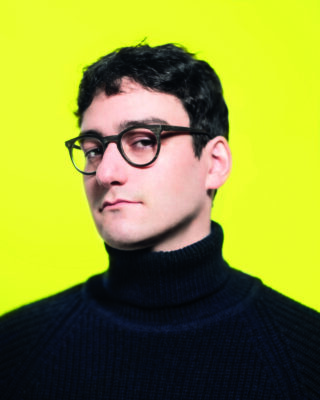
People often first find themselves in DJ Danny’s stadium. That’s at the ground level of Club Harlecore. It’s a large circular stadium – this large amphitheatre sort of thing. DJ Danny is less of a human. He’s more of a conduit to a euphoric energy. You see the light come down, and DJ Danny spreads it amongst the people. There needs to be a crowd of people for him to appear. He just disappears if there’s no one there.
Everything in the room is centred around him amplifying that energy. He’s sat with his hands open, around a table of golden CDJs that he uses to create the music of DJ Danny.
Ross [Hudson Mohawke] said to me that rave tunes are often a way for men who are quite frightened of expressing emotions to have a space to feel them, with these emotional melodic lines that you’ll hear in the middle of a very aggressive track. It’s almost like they need a protected shell of a hardcore rave track to experience this fragile emotional moment. I can’t say that I’m concerned with appearing like a manly man or anything, but by creating this space around the emotion, it heightens the ability for me to feel that euphoria.
The visuals came together slowly, as did the concept. I was quite reluctant initially when the idea first came to me, because I knew it had a huge scale to it.
I spoke to Paul Devro from Mad Decent who was like, “Yep. Sick. Makes perfect sense. Let’s do it.” which was a sign that it was the right label for this.
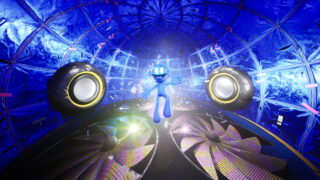
From that point, in the classic club pilgrimage, you find yourself being drawn upwards into what used to be the air conditioning system. It’s a sort of blue, inflatable dome with springs everywhere. As you make your way inside there you hear this very fast, very bouncy sound. There’s a little blue man with a big smile on his face and he talks very fast, and the energy is immeasurable and unlike anything you’ve heard before.
For most people, it’s the kind of thing where they’re never done anything like this before, but they can’t deny the energy and get involved in what’s going on in the room… Sorry, I’m just thinking about a Spanish translation of Harlecore that described MC Boing as a “blue underpantsed child”, and DJ Mayhem as a bear on fire.
I’m not sure what else to say about MC Boing apart from to say that MC Boing is MC Boing. You know, “MC Boing is bouncing all night. Everybody here is safe and nice...” MC Boing’s songs take less time to write than they do to perform.
Where did he come from, where does he go? There’s a long story about how he arrived there. It involves a big accident that happened… He wasn’t always MC Boing, but that information is unfortunately classified for the time being. And where does he go? No one knows. He’s always in that room.
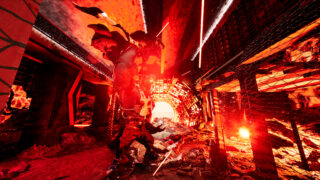
After a certain amount of time, people find themselves being drawn downwards, to where they hear the smashing of metal. The colours get redder and they feel a sense of violence about them. Maybe had too much fun. You find yourself in the basement of Club Harlecore.
DJ Mayhem has a massive hammer. He calls it his skelper. He smashes it onto his burning pile of CDJs. At the drop of his tracks, instead of listening to it, he’ll just smash everything with his hammer. The drops aren’t actually the sound of his music; it’s just an endlessly smashing pile of CDJs.
The purpose of this room is to explore the monster within you, to achieve euphoria though those means. People find themselves getting smashed directly by DJ Mayhem, it’s quite a shocking experience for them.
The first official Harlecore tracks started being made as DJ Mayhem, which was a conjuring between me and HudMo who was my production hero at the time. There was one point where we were working on a drop for a track. I was going over his shoulder saying, “Oh, why don’t you put that there?” and then realised that I was talking to someone who basically invented a lot of what we think of as relevant for a drop, and I shut up. But he was very polite. Ross is absolutely brilliant – a naturally occurring artist in the wild, with possibly the least pretention I’ve ever seen anyone have.
DJ Mayhem’s music is halfway between us. It’s not me, and it’s not Ross. That’s where the character became useful, and where the beginnings of the project came from. In my mind, it would be more complicated to present Harlecore as a collaborative rave LP, and get in the way of what I want to say.
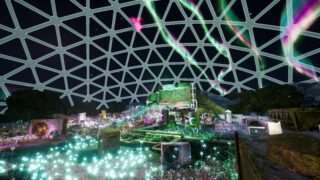
After having the living shit beaten out of you by a bear on fire, a lot of ravers find themselves on the floor, opening their eyes. But to be more specific, on DJ Ocean’s floor. There’s very little known about DJ Ocean. There are reports of bioluminescent flowers, and glimpses of other realms Ocean might come from. There are rumours that DJ Ocean is a sentry to an event horizon, and not necessarily a professional DJ.
This is where the forlorn raver’s who’ve lost their way can go – a place of healing once you’ve explored every element of your own self, so that you can rebuild.
When I first started working with Caroline [Polachek], I was obsessed with the Chairlift song ‘I Belong In Your Arms’, and to this day I think it’s possibly the best chorus I’ve ever heard, bar ‘Kiss from a Rose’ by Seal, which is my favourite song. DJ Ocean came about later, both as a product of necessity and chemistry.
I was doing a Harlecore in New York when this kind of rave music wasn’t as much of a thing. I was very hard pressed to find any DJs who played any kind of music I was interested in. One of the artists I found who was incredibly interesting was Kilbourne, but they unfortunately broke their nose on the night and couldn’t attend. I basically had to invent a bunch of acts to play that evening, one of which was the elusive DJ Fuck, who we haven’t heard a lot of since then, but who might be making an appearance at some point.
DJ Ocean opened the night. It was an act that appeared almost out of nowhere as a collaboration between me and Caroline where very few words were actually exchanged. I started making things and she started singing over it, and it was like, “Yeah let’s just do that at the gig.” Somewhere between there and here, we have DJ Ocean.
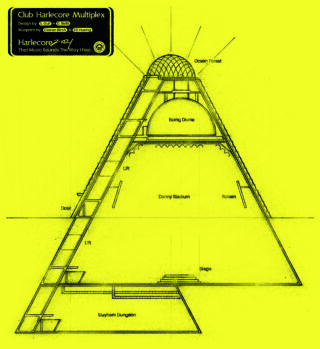
There were multiple iterations of the club layout. It had to be exactly right. I knew when it was wrong, and it became more real the more that we were making it. You’d think it would be the opposite.
I can remember going to clubs when I was much younger. We’d do that thing where you go to a pub, and everyone’s talking – and I like that when everyone’s talking. Then there would be this point where you’d go to a club and the music would be too loud to talk to anyone, and there would be this very strange atmosphere of things getting very serious.
It took me a long time to realise that going to clubs and going to parties were about having fun. I felt a weird sense of obligation to do these things, and when I realised that they’re about having fun I managed to make my own fun out of it.
That’s when I started hosting them myself. I felt like I was taking part in society. You find your own way of doing things that works for you.
Clearing a dancefloor can be quite a good thing, it turns out.
Early on, online chat was an idea, but that wasn’t what the project was about. Fortunately for me, there’s a Discord that’s formed, which I’ve been shown. It seems to have more effort put into it than the entire Harlecore project. The compartmentalised rooms, the custom emojis, the queuing system, the listening parties… it’s quite something really. It’s a dream for someone like me to know that there’s people willing to make that effort to enjoy this thing you’ve made.
In terms of Club Harlecore, online elements would confuse what I was trying to say. This experience of isolated euphoric melancholy is a universally felt thing that’s existed before electronic music. It’s an eternal feeling that humans have always felt. This is just my way of saying it at this one point in time, and solidifying my appreciation for this type of music that helped me find my way of feeling this euphoria. For that reason, it needs to stand statically as a preserved statement.